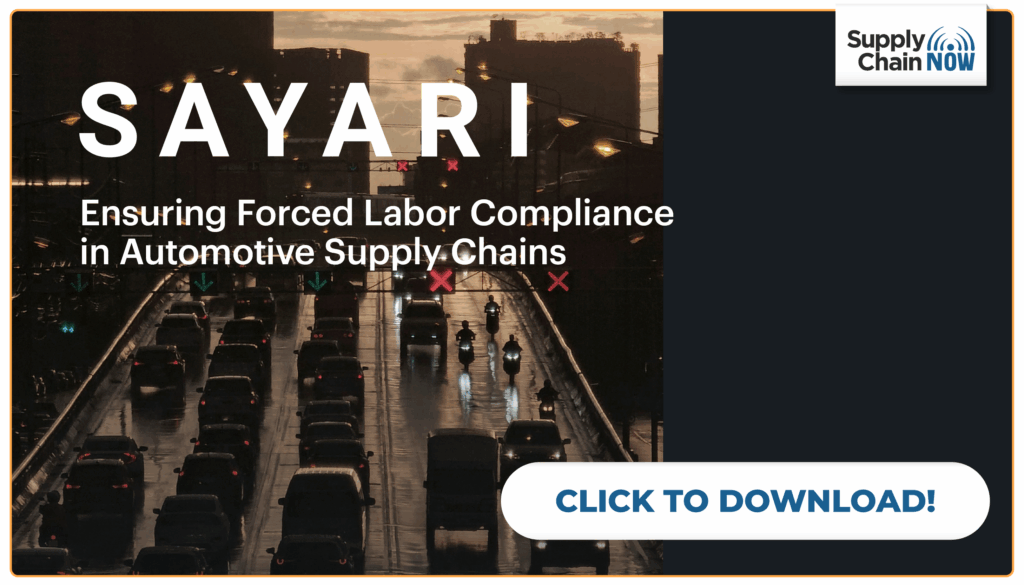
More

disruption
November 5, 2025
Ensuring Forced Labor Compliance in Automotive Supply Chains
Turn data into insight – map, monitor, and mitigate fortced labor risks across your value chain. Since the Uyghur Forced Labor Prevention Act (UFLPA) went into effect in 2022, sub-tier supply chain visibility has become an increasingly critical and ubiquitous prerequisite for import compliance. Automotive companies, due in no small part to their highly complex supply chains, are among the hardest hit by this requirement of anti-forced labor and ESG regulations. A recent study by Sayari analysts found that 95% of leading OEMs’ exposure to forced labor risk comes from sub-tier suppliers. The ability to identify and mitigate risks throughout their value chains is critical for OEMs aiming to minimize operational disruptions, avoid detentions, and maintain competitive advantage. Download the report to learn how Sayari is overcoming barriers to supply chain visibility, enabling OEMs to map their sub-tier supply chains, identify indirect exposure to forced labor risk, and foster greater supply chain resilience in an increasingly dynamic trade landscape. DOWNLOAD NOW

freight tech
June 28, 2024
FreightTech Round-Up: 9 Solutions Changing the Game
It’s an exciting, transformative period for the global supply chain. After several years of disruptions from the pandemic, high-stakes labor challenges, and unstable global trade, supply chain innovators are looking to future-focused solutions that can help logistics professionals not just survive, but thrive in this complex environment. In this article, we explore nine FreightTech solutions (in no particular order) that are making a significant impact in 2024. 1. Axle: Streamlining Back-Office Operations with AI Axle Technologies is modernizing the logistics industry by leveraging artificial intelligence to streamline time-consuming back-office operations. Their universal data platform simplifies access to logistics data, enabling companies to optimize deliveries, reduce fuel costs, and enhance the sustainability and profitability of trucking. Axle embraces diversity, collaboration, and the 80-20 rule, understanding that customer feedback is essential for innovation. By wrangling diverse data sources into a universal schema, Axle is building the transportation infrastructure of tomorrow, making the industry more efficient and resilient. 2. EAIGLE: Enhancing Visibility with AI EAIGLE uses AI to provide unprecedented visibility into operations at gates and yards. Their end-to-end AI platform works with existing or third-party hardware, including optical and infrared cameras and radar sensors. This hardware-agnostic approach ensures superior accuracy, eliminating false…
